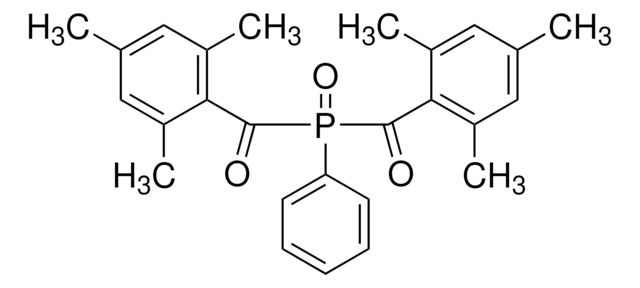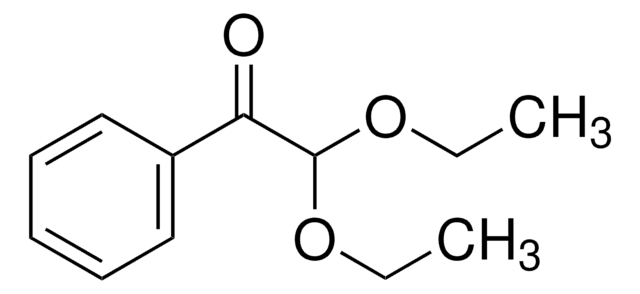410896
2-Hydroxy-4′-(2-hydroxyethoxy)-2-methylpropiophenon
98%
Synonym(e):
1-[4-(2-Hydroxyethoxy)phenyl]-2-hydroxy-2-methyl-1-propan-1-on, 2-Hydroxy-1-[4-(2-hydroxyethoxy)phenyl]-2-methyl-1-propanon, 2-Hydroxy-2-methyl-1-[4-(2-hydroxyethoxy)phenyl]propan-1-on, 4-(2-Hydroxyethoxy)phenyl 2-hydroxy-2-propylketon
About This Item
Empfohlene Produkte
Qualitätsniveau
Assay
98%
mp (Schmelzpunkt)
88-90 °C (lit.)
SMILES String
CC(C)(O)C(=O)c1ccc(OCCO)cc1
InChI
1S/C12H16O4/c1-12(2,15)11(14)9-3-5-10(6-4-9)16-8-7-13/h3-6,13,15H,7-8H2,1-2H3
InChIKey
GJKGAPPUXSSCFI-UHFFFAOYSA-N
Anwendung
- Polyacrylamide-transplantierte Chitosan-Nanopartikel durch Copolymerisation von Acrylamid und Chitosan-Nanopartikeln.
- Hydrophober Polyurethanschwamm durch Thiol–en-Click-Reaktion.
H-Sätze
P-Sätze
Gefahreneinstufungen
Aquatic Chronic 2
Lagerklassenschlüssel
11 - Combustible Solids
WGK
WGK 1
Flammpunkt (°F)
not determined
Flammpunkt (°C)
not determined
Persönliche Schutzausrüstung
Eyeshields, Gloves, type N95 (US)
Hier finden Sie alle aktuellen Versionen:
Besitzen Sie dieses Produkt bereits?
In der Dokumentenbibliothek finden Sie die Dokumentation zu den Produkten, die Sie kürzlich erworben haben.
Kunden haben sich ebenfalls angesehen
Unser Team von Wissenschaftlern verfügt über Erfahrung in allen Forschungsbereichen einschließlich Life Science, Materialwissenschaften, chemischer Synthese, Chromatographie, Analytik und vielen mehr..
Setzen Sie sich mit dem technischen Dienst in Verbindung.








![2-[2-(2-Methoxyethoxy)ethoxy]essigsäure technical grade](/deepweb/assets/sigmaaldrich/product/structures/335/694/b58c539b-141f-4ab2-98d9-5f46c748490b/640/b58c539b-141f-4ab2-98d9-5f46c748490b.png)





